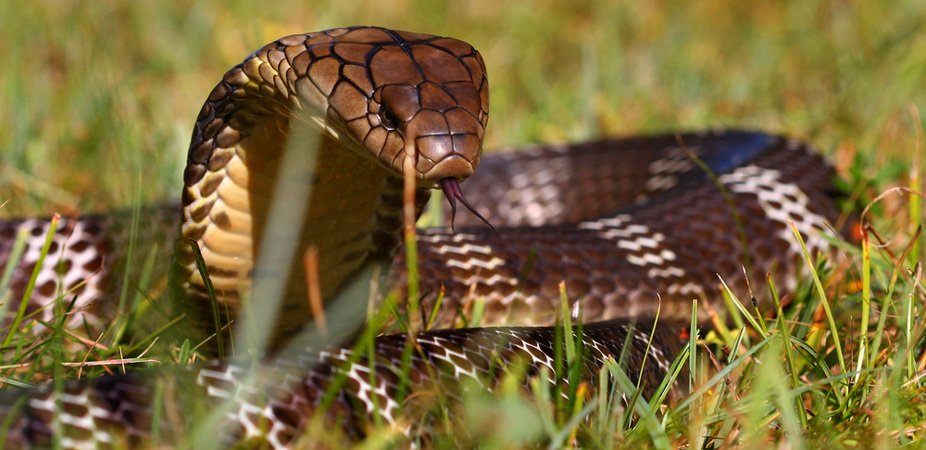Snakes on Planes? Serpents Accelerate Faster Than Fighter Pilots

Snakes can strike faster than the blink of an eye and can reach cheek-jiggling accelerations that would cause a fighter pilot to black out, new high-speed video reveals.
The high-speed footage also contradicts the commonly held assumption that venomous vipers were the fastest striking serpents. Instead, ordinary, nonvenomous constrictors such as rat snakes can often strike as fast as their deadly counterparts. [The World's 6 Deadliest Snakes]
"I was quite shocked to see the short strike durations and high strike accelerations coming from an unassuming, easily found rat snake," said study lead author David Penning, a functional morphology doctoral candidate at the University of Louisiana at Lafayette. "This rat snake is not rare or hard to care for. They can even be found in the pet trade. I did not expect this level of performance from a rat snake."
The quick and the deadly
Common lore held that the quickest-moving snakes were vipers, or venomous snakes with long, hinged fangs that can fold back against the roofs of the animals' mouths. (Rattlesnakes, adders, copperheads and water moccasins are some of the most infamous members of this deadly family.) Later scientific reports repeated this assertion, but never really tested it, Penning said.
"When we began processing the high-speed videos from the larger individuals, we started to notice that the values for maximum strike velocity and acceleration were way higher than we expected," Penning told Live Science.
Penning and his colleagues realized that while prior work suggested vipers had the fastest strikes among serpents, very few snake species actually had their strike speeds clocked.
Sign up for the Live Science daily newsletter now
Get the world’s most fascinating discoveries delivered straight to your inbox.
"Much of, though not all the scientific research on snake striking has focused on vipers," Penning said.
Unlikely speed stars
To broaden the data, the scientists analyzed more than 150 high-speed-video recordings of defensive strikes from 14 Texas rat snakes and members of two species of vipers: six western cottonmouths and 12 western diamondback rattlesnakes.
All the snakes the researchers analyzed struck at very high speeds — up to about 11.5 feet per second (3.5 meters per second) — with no significant differences among them. Both harmless and venomous snakes could reach their targets in about 50 to 90 milliseconds, literally faster than the blink of an eye, which takes about 200 milliseconds in humans.
All the snakes could also reach very high accelerations, of up to about 28 Gs, or 28 times the force of gravity, the researchers reported today (March 15) in the journal Biology Letters. The rat snakes reached slightly higher peak acceleration, though the difference was not statistically significant. In comparison, previous research has found that fighter pilots can lose consciousness at accelerations of more than 9 Gs, even when wearing special suits designed to help the pilots withstand extreme high-G maneuvers.
"If a snake hunts prey that can escape in under a certain amount of time, the only way the snake can catch that prey is to close the distance between itself and its target in a short amount of time, or by rapidly accelerating toward the target," Penning said. "The snake has to strike fast enough to catch the prey before it can try to feed on it, whether it be by envenomation or constriction."
Future work can investigate how snake nervous systems behave during such fast strikes and under such high accelerations, Penning said. Researchers can also explore how factors such as body temperature, habitat complexity, and prey or predator response times might influence snake strike speeds, he added.
Follow Charles Q. Choi on Twitter @cqchoi. Follow us @livescience, Facebook&Google+. Original article on Live Science










